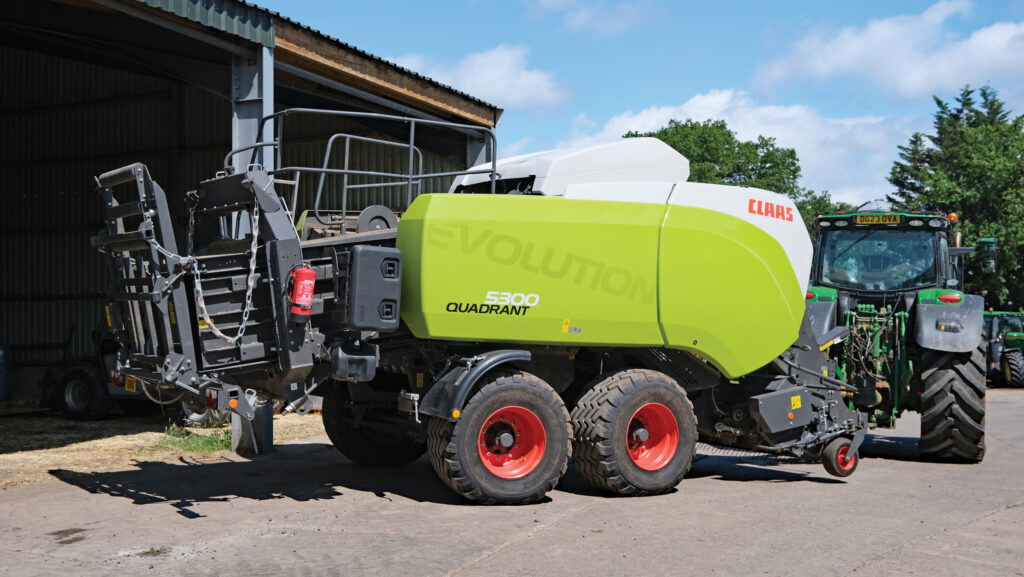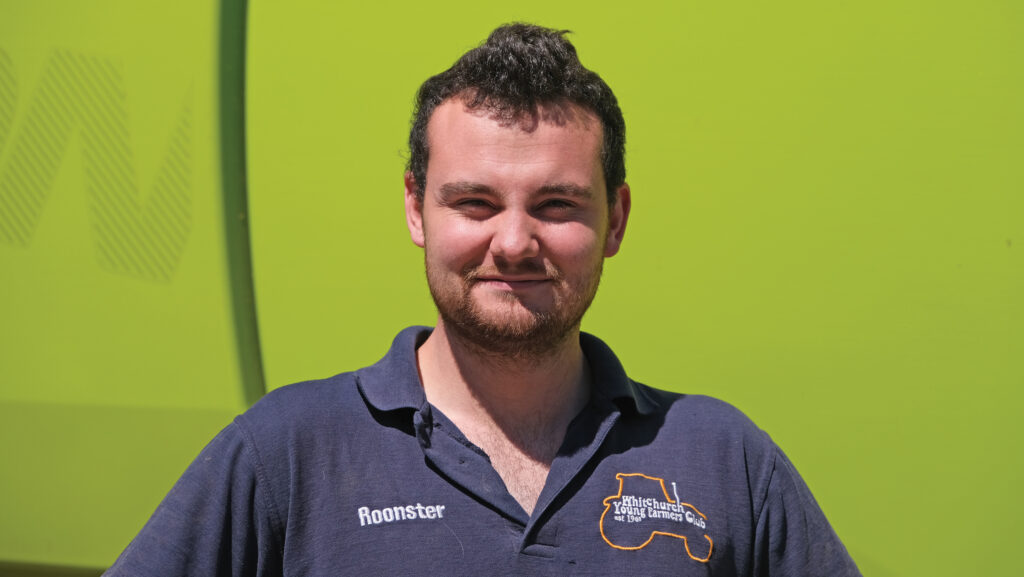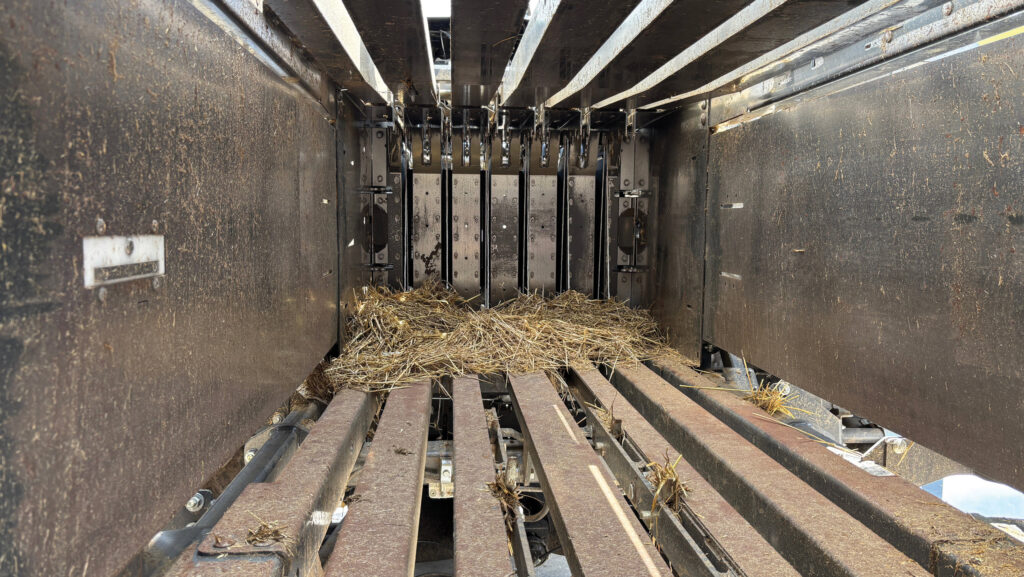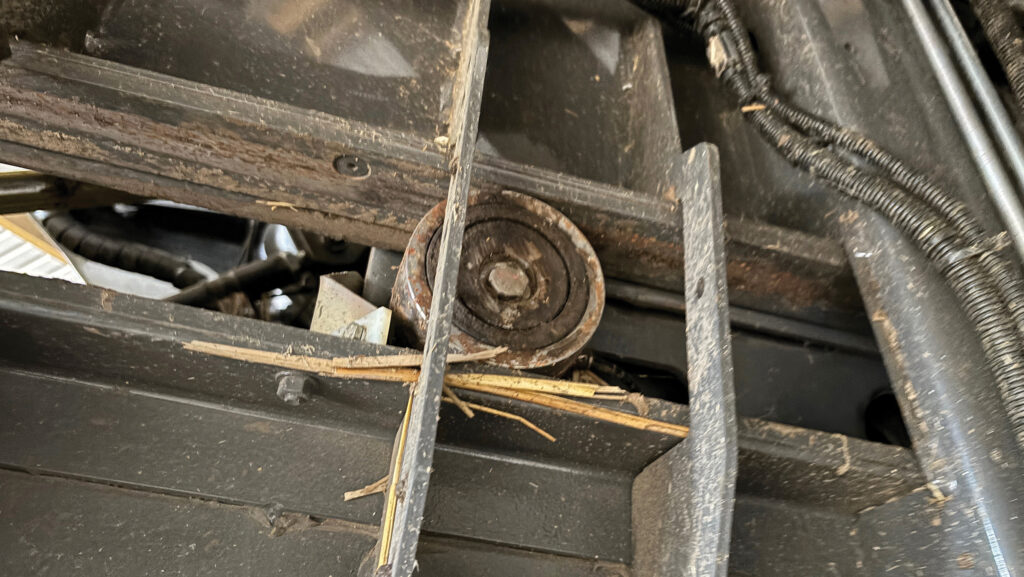Driver’s view: Liam Rooney’s Claas Quadrant 5300 Evolution baler
 Claas Quadrant 5300 Evolution baler © James Andrews
Claas Quadrant 5300 Evolution baler © James Andrews The 5300 Evolution occupies the top spot in Claas’s Quadrant line-up, with a hydraulic pre-chamber that helps create dense 120×90 bales.
Two such machines are operated by Shropshire native Liam Rooney, who runs a mixed contracting business and rears 100,000 broilers with grandfather Ray White.
See also: Ultimate guide to buying a round baler 2025

Liam Rooney © James Andrews
Liam Rooney’s Claas Quadrant 5300 Evolution
- Year 2023 and 2024
- Bale count 20,000 and 8,000
- Pick-up width 2.35m
- Plunger speed 46 strokes/min
- Bale chamber length 3.85m
- Price paid £140,000 each
Why Quadrant 5300s?
We’ve had Claas balers for years and have always got on well with them, but the biggest draw is the service we get from our dealer, Morris Corfield.
If it sold another brand, there’s a decent chance that’s what we’d have.
The move to 120×90 bales is a relatively recent one for us as there’s still a strong demand in our area for smaller bales, particularly for hay and silage.
As a result, we make a lot of 120x70s with a Quadrant 5200, and 80x70s with a pair of Quadrant 2100s.
And we’re still pumping out conventional squares, which we bundle with an Arcusin Multipack.
But growing appetite for larger, denser straw bales pushed us to invest in our first 5300 Evolution, an ex-demonstrator, in 2023.
Around that time, a well-respected local contractor sadly had to pack up due to ill health, which meant there was more work than we could handle with one machine.
Initially, we bought a used 3300 to provide some backup, but this struggled to put enough straw into the bales, so we traded it in for another ex-demo 5300 and ran two last season.
How have they performed?
They’re great machines to use and have plenty of output for us, despite not being dedicated high-density models.
We’ve got a lot of small fields in our area and we aren’t always following combines with huge headers, both of which limit output.
That said, in the right conditions we can make 80 bales/hour.
They don’t need a silly big tractor on the front either – ours are pulled by a John Deere 6195R and 6R 195, which are well on top of the job.
As for weights, we have a target of 480-520kg of straw, which they never struggle to achieve.
Plus, they look really tidy as there are knives inside the chamber that trim off any tufts.

Chamber has knives inside that produce particularly tidy bales © James Andrews
We’re also fans of the single-loop knotter system, as are many of our customers.
For one, they don’t leave tails on the top of the bale, and there’s no second knot to drag round when removing the strings.
Maintenance is easy, too, as the only chain is on the pick-up – the rest of the components are powered by shafts and oil-immersed gearboxes.
As for breakdowns, the sole problem we’ve had so far is one failed ram roller bearing on our first machine, which was a bit bizarre.
We spotted it while doing our checks one morning and got it replaced before any damage was done.
The rest of them have been fine, so it was possibly a manufacturing fault.

The only breakdown has been a failed ram roller bearing © James Andrews
What could be improved?
It’s hard to pick holes in these machines, particularly when you compare them with the 3300 we ran alongside.
The pick-up is fast, the hydraulic pre-chamber does a great job of keeping the bales consistent and they work well in most conditions.
It would be nice to have a reverser for the pick-up, as it can block in grass to the point you have to pull it out manually.
Having said that, we only tend to use the 5300 in straw, so this applies more to the 5200.
Like most balers, the moisture meter isn’t very accurate, so we don’t take much notice of it and use probes instead.
A bigger tool box would be handy – one that can hold a leaf blower – and it would be good if there was an extra fan to keep the sides of the baler clean.
How long are you going to keep them?
We’ve got no plans to change them anytime soon, largely because the cost of trading them in is so high.
For this reason, we’ll probably push the bale counts to 50,000 or 60,000, which could take about 10 years.
That said, who knows what’s going to happen in that time.
We might gain a load more work, lose some work, or the technology changes and we decide to upgrade sooner. We’ll have to wait and see.
Likes and gripes
Likes
- Produces dense, tidy bales
- Doesn’t require a massive tractor
- Reliable and easy to maintain
Gripes
- Moisture meter isn’t great
- Tool box could be bigger
- Extra cleaning fans would be handy

